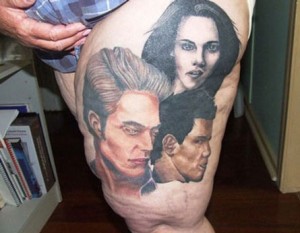Hannah (Mia Farrow) is caring and giving. She’s closed off emotionally.
Lee (Barbara Hershey) is beautiful and passionate. She’s sleeping with Hannah’s husband.
Holly (Dianne West) is funny and vivacious. She’s a recovering coke addict.
These are Hannah and her sisters, the stars of Woody Allen’s drama about the complicated relationships of a family of middle-class New Yorkers. Though one could argue for the inclusion of and their Men at the end of the title, this story is really about the three sisters and the intertwining of their romantic lives. Hannah’s husband Elliot (Michael Caine) becomes involved with Lee, while Hannah’s ex-husband Mickey (Woody Allen), who once dated Holly to disastrous results, finds himself facing an existential crisis after suffering a cancer scare.
Some parts of Allen’s film feel reminiscent of a Raymond Carver story, with its examination of New England, upper-middle class dissatisfaction. It’s distinctly lighter in tone, though, with the usual Allen assurance that even though life’s dull and complicated, we might as well enjoy it when we can. One can probably see the director’s own struggle with faith and religion in Mickey’s search for God (in one amusing sequence, Mickey goes home to tell his Jewish parents he’s decided to become a Catholic).
Micky hits bottom
Caine and Hershey both deliver powerful performances as adulterous lovers Elliot and Lee. Though Lee conceals a quiet passion in every glance, it is the devoted, bespectacled Elliot who surprises us with his professions of undying love, especially when one considers Hannah’s caring nature. Then again, it is this very aspect of Hannah’s personality—her self-sufficiency, both in life and in bed—that Elliot finds so difficult to endure. As for Lee, she feels stifled by her partner Frederick, a misanthropic artist who claims that Lee is his only connection to the world. Feeling burdened and perhaps even a little dismayed by the notion of being a recluse’s anchor to reality, Lee decides to take the risk of seeing her sister’s husband behind the doors of a hotel room.
Hannah and Her Sisters succeeds most brilliantly through its inclusion of moments of internal dialogue on the part of the characters. In one scene, Holly berates herself for not being more forward as she travels in a taxi with friend/competitor April (Carrie Fisher) and their mutual love interest. In another, Elliot urges himself to be cautious and prudent about revealing his feelings for Lee. A moment later he has pressed his lips upon her mouth in a desperate profession of love. These scenes display the pull between desire and social expectation in the lives of Allen’s New Yorkers.
These characters are not the victims of disaster. Don’t look for car crashes or unexpected declarations of paternity. Even the cancer storyline couldn’t be more different from your usual soap opera fare. But problems lurk below the surface, simmering slowly, sometimes hot and sometimes cold. Despite the safety of material comfort, marital and existential happiness remain elusive–always sought, but unappreciated when found.
As with many of Allen’s films, the characters are followed with almost claustrophobic focus and regularity. This neurotic intensity of the camera denies us any grand shots of New York, or even sometimes just a little room to breathe and gather our thoughts. Though some may find it uncomfortable, it reminds me that this moody actor/director called Woody Allen loves people. It’s not a romantic love, nor is it unchanging. Rather, it’s a love that watches with fascination, equal parts amused and enchanted by the absurdity of the world.
Enjoy our great student discounts today with this coupon for Ballaro Caffe Prosciutteria!
Andres Oliver, Emory University
Check out my blog and twitter!
Click here to download the Campus Clipper iTunes App!
Follow Campus Clipper on Twitter or keep current by liking us on Facebook.
Interested in more deals for students? Sign up for our bi-weekly newsletter to get the latest in student discounts and promotions and follow our Tumblr and Pinterest. For savings on-the-go, download our printable coupon e-book.










 I saw the
I saw the 







